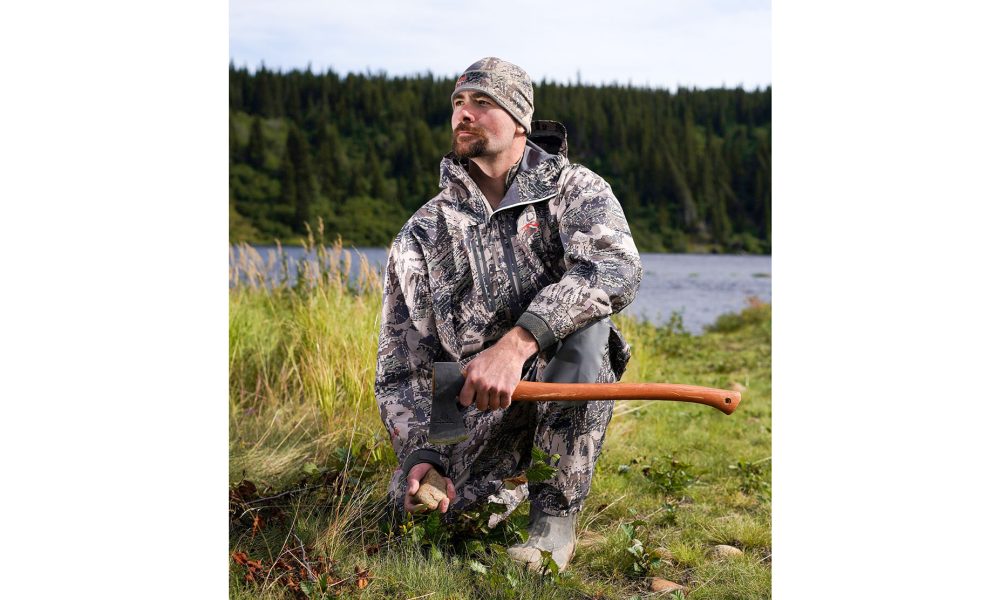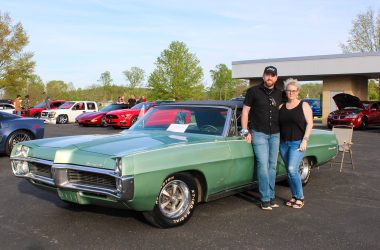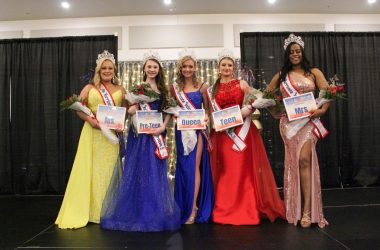Terry Burns (Photo courtesy of The HISTORY Channel)
Terry Burns, who grew up hunting and fishing in Putnam County, was recently selected to be one of ten contestants in the History Channel’s survivalist series “Alone.” Permitted to take only ten pieces of gear with them, contestants must survive in the wilderness for as long as possible. They must hunt and forage for food, build shelters for protection against the brutal elements, and constantly be on the alert for dangerous predators. To compete in this extreme reality show, Burns traveled to the northeastern shores of Labrador, Canada, a location which is known for its harsh, unpredictable weather.
Burns grew up in Hurricane and graduated in 2009 from Hurricane High School. After graduating, he worked in construction. The hours were long, and he did not get to enjoy many activities outside of work. He felt as though he was constantly running in the rat race, and longed for a change. In the spring of 2011, he put in his two weeks’ notice and took a leisurely road trip to every state west of West Virginia – thirty-six states in all – before at last reaching Alaska.
“I wanted to see everything; I read about all these places and never experienced them,” he says. He did not have GPS, so he looked at a road map and picked interesting sounding places or national parks to visit along the way. At last he came to Cooper Landing, a town on the Kenai Peninsula in south central Alaska, with only $37 to his name. He found employment managing a tackle shop and went fishing every day. He later moved to Homer, Alaska, where he became a commercial fisherman.
Burns describes Homer as being similar to Hurricane. “It has a small town feel, and folks are willing to help each other,” he says. While on fishing expeditions, he often goes out to sea for three to four months at a time to catch wild salmon, herring, shrimp, and crab.
During one of his trips back to civilization, Burns watched an episode of “Alone” while staying at a friend’s house and was fascinated by the show’s premise. Knowing his love of wilderness living, his friends encouraged him to apply to be a contestant. He was given an interview and then invited to participate in a boot camp experience hosted by the show runners. While many people applied to be on the show, only a few were chosen.
Burns says that wilderness living is a labor of love and that he feels happiest when he is hunting and fishing. He felt that he struggled through everything he attempted, but there was something about the outdoors which just clicked for him. “When I am in the back country, I feel better, more connected,” he says. “I feel healthier and stronger. I have better cognitive memory function.”
While it might be a sore challenge for many people, Burns frequently goes eight to ten months without any electronics. He says that he is unaccustomed to social media. He also has not bought meat from a store in ten years, as he has no need. He hunts deer, caribou, moose, mountain goat, and bear. He says he finds it important to know where his food comes from.
“I don’t harvest anything that I don’t use to the fullest,” he says. “I don’t believe in killing just to kill.”
Burns tries to use every part of an animal. When he first started, he purchased harsh chemicals to prepare hides, but now he uses the animal’s brain or lye created from campfire ash to facilitate the leather making process. From time to time, he engages in smoke tanning, a process involving draping a hide over a green wood fire to dry it out and preserve it. These are traditional tanning methods used by the indigenous peoples of the Americas.
Before the “Alone” experience, Burns frequently went on 25 or 30 month long solo backpack hunting expeditions. His adventures have taken him out of the United States as well; he has lived among various indigenous peoples, learning their ways of life and skills to survive in harsh environments.
In 2014, Burns was involved in a plane crash when the float plane he was riding in hit a rock in the river. Fortunately, no one in the plane – which was only carrying the pilot and co-pilot in addition to Burns himself – were severely injured, but they were stranded in the Amazon rainforest. People of the Wai-wai tribe came to their assistance, and though they did not understand English, the tribesmen communicated through gestures and drawing figures in the sand.
Burns says that he discovered a lot during his time living with the Wai-wai, who are hunter gatherers. They used various plants for medicine, which they would chew up and turn into a paste used for sunburns and other injuries. Burns learned hunting and fishing techniques from the tribesmen, techniques with which he had previously been unfamiliar.
Burns has also lived with the San people of Namibia. These people had traditionally been foragers, but they were forced to switch to farming when they were no longer allowed to hunt by their country’s government. Burns says that the San people have incredible tracking abilities and techniques which come from having to track cattle from an early age.
While he has traveled all over the globe to live a survivalist and substance lifestyle, Burn says that the foundations of his knowledge come from learning to hunt and fish in West Virginia. He tries to come back to Putnam County in the fall and visit his family for Thanksgiving. He says he is very thankful for his large extended family and support system.
Burns says that he loved his time filming “Alone” for the History Channel. “The general premise of the show is that you take ten individuals, drop them off with ten items that are selected from predetermined list, and they live off the land as long as you can,” he explains. “It was an incredible opportunity to meet like-minded individuals and be in the wilderness. I am thankful for the outpouring of support and seeing how excited people get. It has been wonderful.”
For his ten items, Burns chose an axe, sleeping bag, bow and arrows, fishing line and hooks, Ferro rod, paracord, 2-quart pot, trapping wire, multitool, and cross-cut saw. “I chose these items because they are essential,” he explains. “With these and a proper mentality, you can create many of the things you need for situations like these. Most of them are simple and I am familiar with them. Any more, and things would be too comfortable; any less would be too difficult.”
“Alone” airs on Thursdays at 9 p.m. on the History Channel and will feature eleven episodes.



